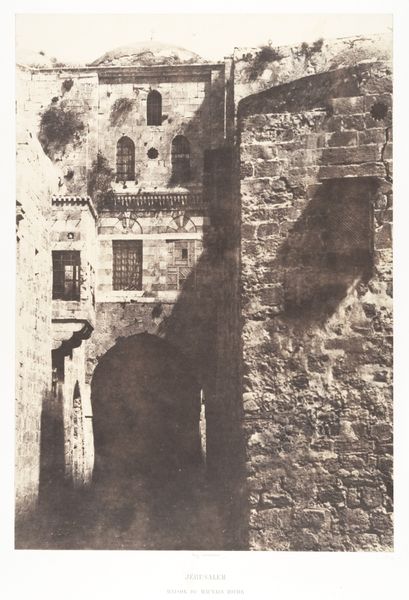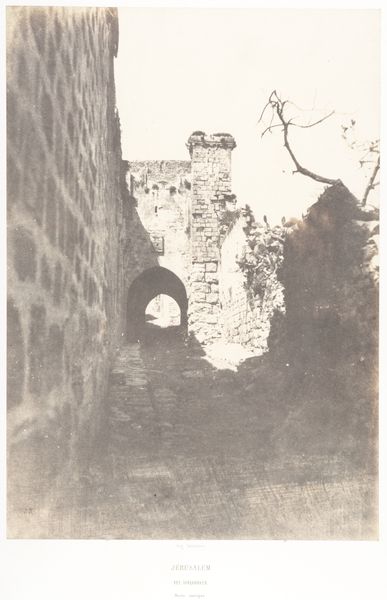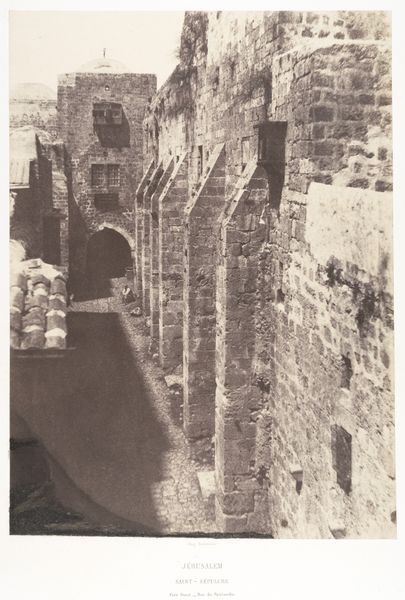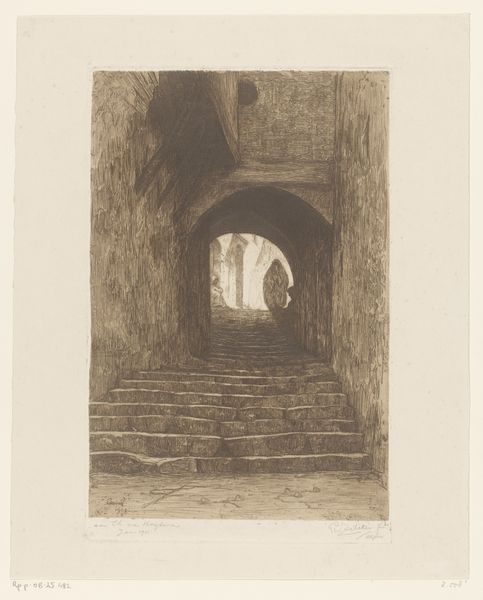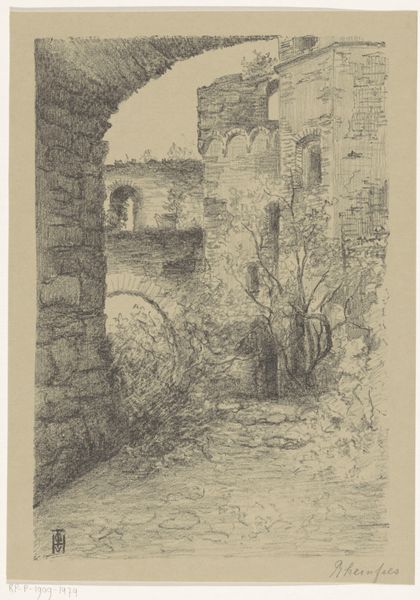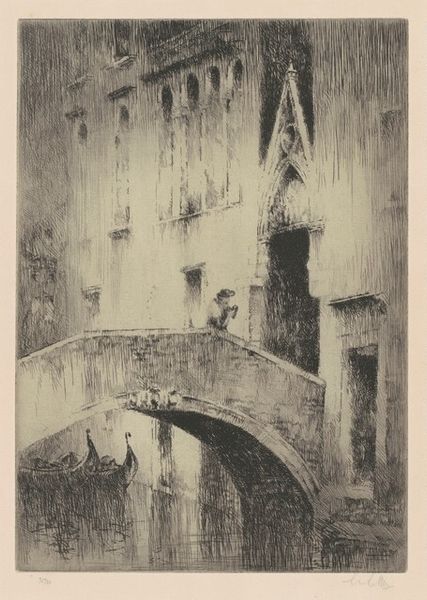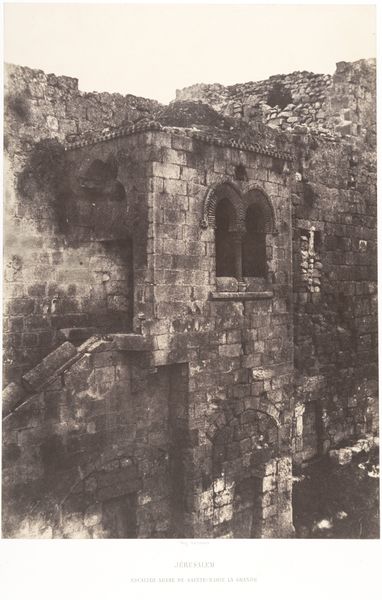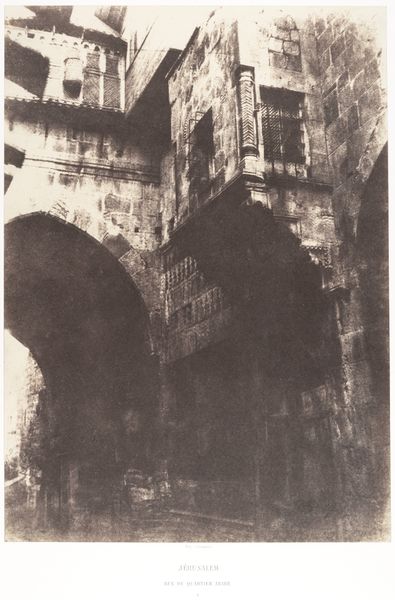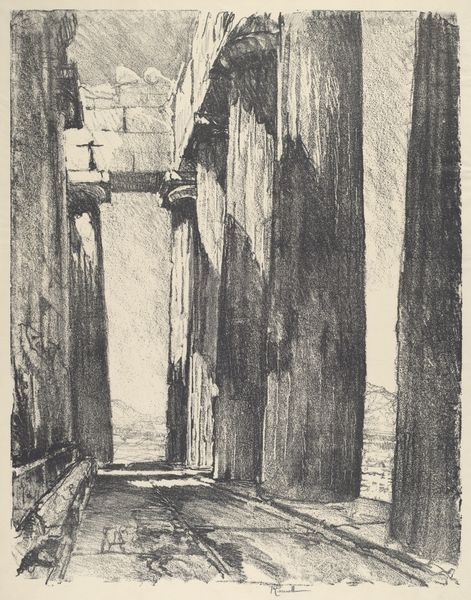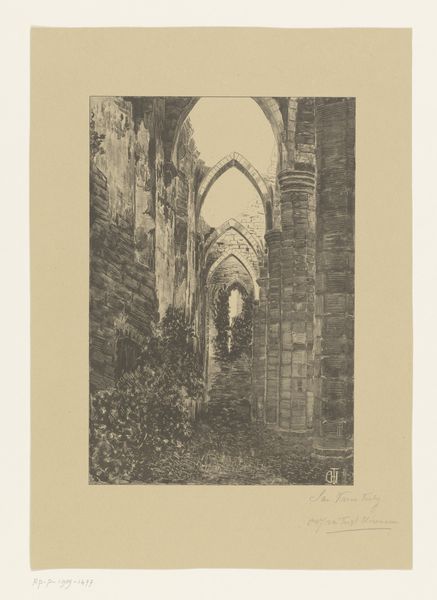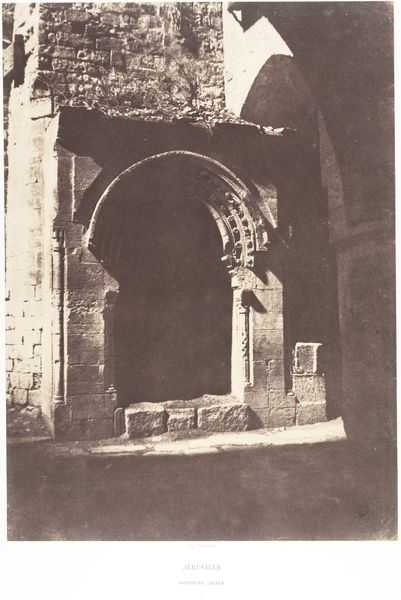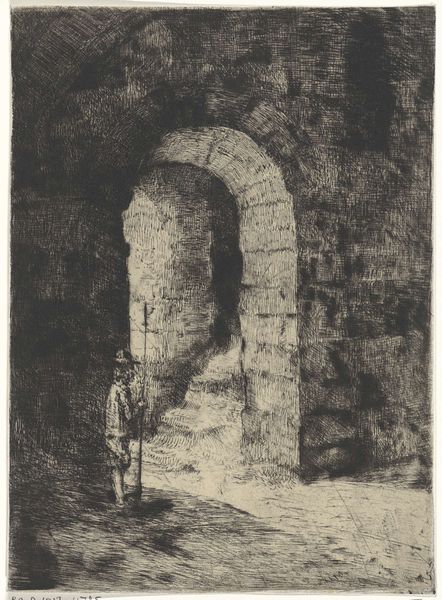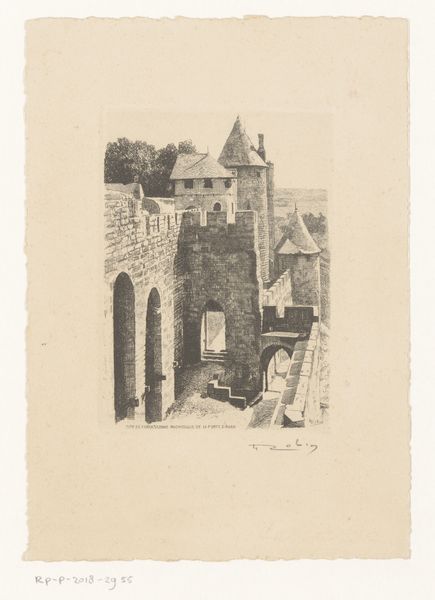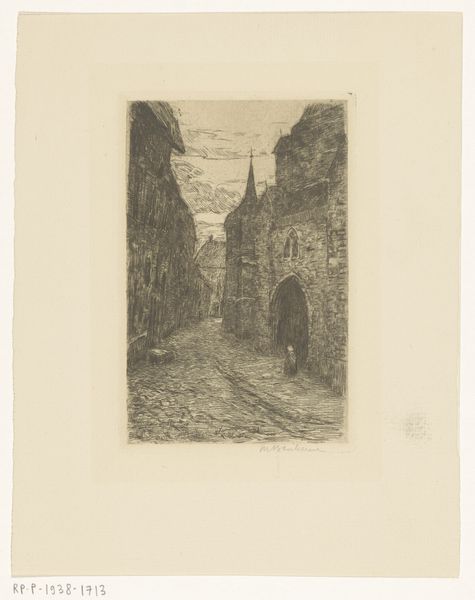
Jérusalem, Saint-Sépulcre, Colonne du parvis 1854 - 1859
0:00
0:00
photography, architecture
#
landscape
#
nature
#
photography
#
ancient-mediterranean
#
arch
#
architecture
Dimensions: Image: 32.6 x 23 cm (12 13/16 x 9 1/16 in.) Mount: 59.6 x 45 cm (23 7/16 x 17 11/16 in.)
Copyright: Public Domain
Auguste Salzmann made this print of the Church of the Holy Sepulchre in Jerusalem using the salted paper process, a relatively early photographic technique. To make salted paper prints, paper is coated with a silver nitrate solution, exposed to sunlight with a negative, and then fixed. The resulting sepia tones evoke a sense of history, but the process also speaks to the industrializing world of the mid-19th century. Photography was quickly becoming a powerful tool for documentation, colonial expansion, and the dissemination of information. Consider the amount of labor involved in the production of this single image: from the mining of silver, to the manufacturing of chemicals, to the skilled darkroom work. Salzmann’s photograph reminds us that even seemingly straightforward images are the product of complex social and economic systems. It challenges us to look beyond the surface and consider the layers of human effort and material transformation embedded within.
Comments
No comments
Be the first to comment and join the conversation on the ultimate creative platform.
